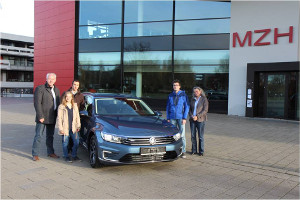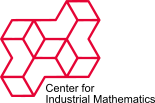AO-Car – Autonome, optimale Fahrzeugnavigation und -steuerung im Fahrzeug-Fahrgast-Nahbereich für den städtischen Bereich
| Working Group: | WG Optimization and Optimal Control |
| Leadership: |
Prof. Dr. Christof Büskens ((0421) 218-63861, E-Mail: bueskens@math.uni-bremen.de )
Dr.-Ing. Mitja Echim (E-Mail: mitja.echim@topas.tech) |
| Processor: |
Laura Sommer
Matthias Rick (E-Mail: mrick@uni-bremen.de) Dr. Matthias Knauer ((0421) 218-63863, E-Mail: knauer@math.uni-bremen.de) Dr.-Ing. Mitja Echim (E-Mail: mitja.echim@topas.tech) Dr. Kai Wah Chan (E-Mail: kai.wah.chan@topas.tech) Benjamin Wagner Dr. Andreas Folkers |
| Funding: |
DLR, Raumfahrtmanagement, Bonn Bundesministerium für Wirtschaft und Energie |
| Project partner: |
AG Kognitive Neuroinformatik, Universität Bremen AG Computergrafik und Virtuelle Realität, Universität Bremen LRT 9.3 Navigation, Universität BW München LRT 9.1 Raumfahrttechnik, Universität BW München |
| Time period: | 01.09.2016 - 31.03.2018 |
| Website: | http://www.math.uni-bremen.de/zetem/aocar |
 The aim of the AO-Car research project is to develop autonomous and safe driving maneuvers for (electric) cars in urban traffic. Different maneuvers, which are particularly relevant in the passenger-specific assistance area, are to be modeled and implemented and tested on a real vehicle in the best possible way. Such maneuvers include e.g. real-time braking and evasive action strategies, automatic parking, assistance in narrow places, brake and lane assistance and many other maneuvers. A concrete scenario are automated car-sharing vehicles that deliver themself directly to the passenger, i.e. autonomous vehicles can be requested from a central car pool and find their way and the parking space in front of the passenger's house.
The aim of the AO-Car research project is to develop autonomous and safe driving maneuvers for (electric) cars in urban traffic. Different maneuvers, which are particularly relevant in the passenger-specific assistance area, are to be modeled and implemented and tested on a real vehicle in the best possible way. Such maneuvers include e.g. real-time braking and evasive action strategies, automatic parking, assistance in narrow places, brake and lane assistance and many other maneuvers. A concrete scenario are automated car-sharing vehicles that deliver themself directly to the passenger, i.e. autonomous vehicles can be requested from a central car pool and find their way and the parking space in front of the passenger's house.
The hybrid vehicle used in the project allows an effective and environmentally friendly choice between electric and conventional drive. In addition, the research car is equipped with a variety of sensors, such as cameras, radar, ultrasound and laser scanners, to enable it to act autonomously. With these sensor data the car can recognize its environment. A computer-generated image of the real test vehicle and the detected environment then allows the implementation of optimal, fast, comfortable, safe and fuel-saving driving maneuvers.
The project is coordinated by the working group for Optimization and Optimal Control at the Center for Industrial Mathematics and carried out in close cooperation with the working group of Cognitive Neuroinformatics. Other partners in the project are the working group for Computer Graphics and Virtual Reality at the University of Bremen and the Institute of Astronautics and Space Utilization at the Universität der Bundeswehr in Munich.
Publications
- L. Sommer, M. Rick, A. Folkers, C. Büskens.
AO-Car: Transfer of Space Technology to Autonomous Driving with the use of WORHP.
7th International Conference on Astrodynamics Tools and Techniques, 2018.

